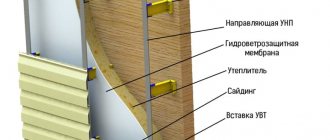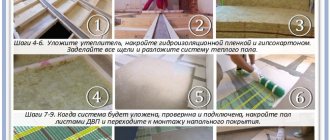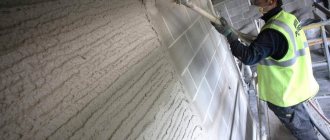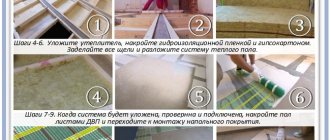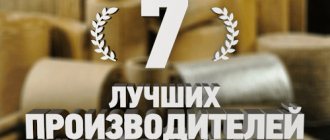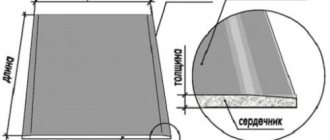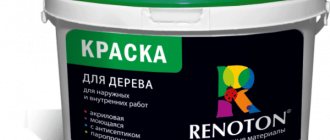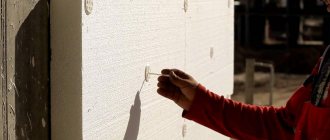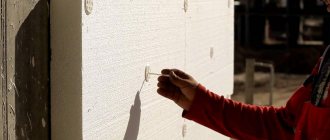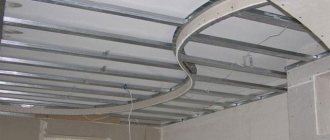Insulation of building structures plays a huge role in maintaining the energy efficiency of a building. The better it is produced, the less expenses are spent on heating, and the longer the life of the house and the more comfortable its microclimate. And the main requirement for thermal insulation is low thermal conductivity, high density, fire safety, good vapor permeability and durability. And this is what fibrous materials like cotton wool can primarily boast of.
Mineral wool is a long-studied and environmentally friendly material with excellent soundproofing properties, low thermal conductivity, biological and chemical resistance, as well as resistance to temperature and mechanical deformation. But everything from this list directly depends on the production technology and the raw materials used.
So let's figure it out, which is better: basalt wool or mineral wool based on slag and glass? Why do you need to wear almost a spacesuit when working with one material, while with another you don’t even need gloves? What is more advisable to purchase to insulate your own home in order to be sure of its durability? We will tell you all about this now.
Types of mineral wool and their differences
Mineral wool has a fibrous structure of various orientations, which can be:
- horizontal;
- vertical;
- corrugated (wavy);
- combined (mixed).
Thanks to the thin cross-section of the fibers and the air mass, it is light and convenient for transportation and installation. The small diameter of each thread helps slow down heat transfer, so behind a small layer of 50-100 mm it will be warmer than behind brickwork of the same width. The range of application of the material starts from insulation of walls, floors and ceilings, to insulation of lines with liquid carriers, industrial containers.
Among the well-known manufacturers of mineral wool are:
Rockwool.
Knauf.
Izovol.
Isover.
Paroc.
Ursa.
In addition to mineral wool, popular names include “basalt”, “stone”, “slag” and “glass wool”. Some buyers, trying to figure out which is better - stone wool or mineral wool, turn to sellers at the market or in the supermarket with similar questions, and inevitably bring a smile to their face.
It’s worth clarifying here: mineral wool refers to all materials that have a similar fibrous structure and are used for sound and heat insulation. That is, stone or basalt, as well as glass wool - these are all types of mineral wool. It makes no sense to talk about the advantages of mineral wool, since this is the general name for a group of fleecy insulation materials. Let's look at what they are separately and what are the features of each of them.
The materials used for insulation of vertical and horizontal surfaces, as well as sound insulation, are prescribed in GOST 52953-2008. They are divided into three types: glass wool, stone wool and slag wool. The latter is made from molten slag, which is a by-product of blast furnaces. Due to its weak structure and high tendency to absorb moisture, it is not very suitable for insulating rooms and will not be considered in this comparison.
Glass wool (glass wool)
The production of glass wool is similar to the production of glass. For the base, sand, borax, limestone and soda are taken. Broken glass can be used, which is the use of recycled materials and provides even greater savings in the cost of the process.
The substances are mixed and fed into the hopper. The composition is heated to a temperature of 1400 degrees, due to which it melts, turning into glass. But they don’t let him freeze. The liquid hot substance is passed through dies into a special centrifuge. Due to the high centrifugal force and the action of steam, the material is divided into multiple thin glass threads.
In order for the fibers to better hold together, polymer substances are added to the composition, acting as binders. Often these are formaldehyde resins, the amount of which can reach 4% of the total mass. In the glass wool of recent years of production, there are new developments where a petroleum composition is used, which has increased the strength of the final product.
The combined mass is dried at a temperature of 250C, which consolidates the polymerization. During this process, the fibers harden and become yellowish in color. After final cooling, it is cut and packaged for sale. The product can be supplied in slabs or rolls of different thickness and density, which is important to pay attention to when choosing.
The thickness of the resulting fibers can vary from 5 to 15 microns, and the length of the threads from 15 to 50 microns. When thousands of similar fibers are woven together, this gives sufficient strength and does not allow the material to fall apart. But individually, each thread is fragile, so it is easily damaged by impacts. The consequence of this is itching and irritation on the skin when invisible fragments dig into bare areas of the body.
Glass wool in a roll.
Basalt (stone) wool
To produce basalt insulating slabs, rock (most often of volcanic origin, frozen on the surface) is used. Hence the second name stone wool. The raw materials are melted in furnaces to a temperature of 1500 degrees and fed into a centrifuge. Rotation at high speed helps separate thin threads from the total mass.
The resulting fibers are immediately subject to the addition of binders (the same formaldehyde resins and petroleum compounds). Under high air pressure, the materials are pushed into the chamber, where it cools and compacts, forming a fleecy substance. Using mechanical cutting, it is given shape and size.
Basalt wool in slabs.
Basalt wool is produced in the form of rolls or slabs. The thickness of an individual fiber is 3-5 microns, and the length does not exceed 16 mm. Therefore, the material has low thermal conductivity and is more durable. Due to the production from stone, the threads are not so brittle and do not dig into open areas of the body.
Having obtained a general idea of the methods for producing types of insulation, you can move on to the details. To find out which is better - stone wool or glass wool, we will consider the key characteristics of each material and highlight the leader by position.
Comparison of technical characteristics: which raw materials are better?
Any insulation is always subject to such important requirements as heat retention and durability. In this, mineral wool has a significant advantage over other types of thermal insulation materials (despite the fact that glass wool has a service life of only 7 years).
At the same time, all manufacturers are actively working to improve their products, constantly conduct research in their laboratories and make sure that their products are convenient and safe for insulating ordinary residential buildings. This can't help but rejoice!
As for raw materials, we can say that there are no bad insulation materials, it’s just that each option is better suited for a specific construction task. That is why it is so important to know the technical characteristics of all three types of mineral wool and their differences from each other.
Thermal conductivity and elasticity
So, let's start with thermal conductivity, i.e. ability to retain heat by the material itself. For glass wool and basalt slabs it is at the same level. This is respectively 0.041 W/m*k and 0.038 W/m*k.
For your own interest, you can search for popular videos on Youtube, where craftsmen are actively testing different types of mineral wool. For example, sticking thermometers into pieces of insulation right on the street, and observing which of the insulation does its job better. The difference turns out to be literally 1-2 degrees, which cannot be called significant.
Next are density and elasticity, which affect the installation process and the weight of the structure. For some roofs, thermal insulation also performs load-bearing functions, for example, in the case of inversion roofs. Therefore, strength characteristics are more important here.
For example, fiberglass has a low density. This type of wool has a compressive strength of 40-45 kPa with a density of about 115 kg per m3. Due to this, the weight of glass wool is significantly lower than basalt.
By the way, the ability to compress and recover without deformation is clearly visible to the naked eye when the packages with insulation are opened:
The density of mineral wool also directly affects its final strength. The better the density, the stronger the insulation. These are important technical parameters that determine for what load one or another type of mineral wool can be taken.
Fire safety and fire resistance
As for fire safety, both mineral and basalt wool do not burn in a fire. At most, their fibers can be baked with each other at a certain temperature. For example, glass wool melts already at 300 degrees Celsius, slag fibers do not lose their properties even when heated to 700 degrees Celsius, and basalt wool can withstand even at 1000 degrees.
But keep in mind that if you choose stone wool based only on such considerations, this is not entirely true. The fact is that wool may not catch fire at a temperature of 1000 degrees Celsius, but waterproofing films and attic cladding definitely do.
The advantage of all types of mineral wool is that they themselves do not support open fire. If you compare them with foam and polystyrene products, then this is a valuable point.
The fact is that during the process of fire spread, polystyrene foam or expanded polystyrene not only burn actively, but also help the fire spread quickly and efficiently. They say about such houses that they “blazed up like a match”:
Cotton wool and skin irritation
Another important point regarding mineral wool. One of its main disadvantages is the harmful dust and causticity of the material itself. But not everyone knows that this is a typical sign of the presence of short and thin fibers in the insulation.
For pebbled boards, the fiber thickness is usually 0.02 mm and the length is less than 3 mm. Those. The thinner and shorter the fibers, the more they look like small needles. Even cutting such a slab is not very pleasant: it is reminiscent of touching dried bread, a lot of effort and a lot of crumbs everywhere. But the longer the fibers, the easier it is to work with them: they are easy to cut, generate almost no dust and do not irritate the skin of the hands.
Basalt wool has an order of magnitude fewer problems with this, and most modern products in this series do not require the use of special protective equipment at all, except for gloves. Although, in fact, glass wool is not such a bad material if you follow the installation instructions and take care of your own safety.
Unfortunately, even with all the awareness, many home craftsmen still have a certain recklessness, due to which they calmly take glass wool with their bare hands and do not care too much about tightly insulating it from the living room. And then these same people write negative reviews on manufacturers’ websites stating that their cotton wool is environmentally unsafe and generally unbearable for the human body.
Important environmental issues
Let's consider this important point. Almost all stone wool manufacturers produce an environmentally friendly product, without toxic substances, which does not emit any unpleasant odors into the room. This type of insulation is truly safe for human health. In addition, such factories even use waste-free production, which is also important for the environment.
As for the environmental safety of other types of mineral wool, such as glass or slag wool, there are several points in contrast to stone wool. Mineral wool may contain small amounts of phenol-formaldehyde resin. But in fact, even during the production process at high temperatures, it polymerizes and turns into an inactive solid state. It no longer remains in its free form, and it does not in any way affect people living in an insulated house. Although formaldehyde is still used to make glass wool.
In fact, stone wool, especially older ones, sometimes contains this substance. The whole problem is in the layered structure of cotton wool: the fibers are arranged chaotically, resulting in the formation of a large number of air pores. And derivatives of phenol-formaldehyde resin, as a binder, transform individual fibers into a strong and elastic fabric that does not crumble or sag. Those. this is a truly important component for production.
And cotton wool with this composition is more durable and stable. Therefore, some manufacturers still contain formaldehyde resin in stone wool, although much less - only from 2.5 to 10%. But the less formaldehyde, the less moisture-resistant the insulation itself, although this is precisely how the threat of benzene evaporation is reduced.
Of course, all these additives are usually contained within normal limits, which is relatively safe for humans and the environment. Today, special laboratories test mineral wool insulation for all these parameters. Moreover, the tests take place in several stages - this is a radiation assessment, a washout for general toxicity and an assessment of the release of harmful substances into the atmosphere.
To assess the level of organic substances in mineral wool, it is placed in a climate chamber for a day and kept at the desired temperature and air humidity for some time. This is how they check whether mineral wool meets the sanitary and hygienic requirements recognized in Russia.
That's why, if you're concerned about the environmental friendliness of a material, ask for a quality certificate. After all, today there is a rather tough struggle in the construction market and sometimes myths are spread about the unsafety of this or that insulation.
Durability and resistance to shrinkage
Another significant disadvantage of glass wool is its ability to shrink. It is because of this that it has a short lifespan, while stone wool is much more durable and retains its shape well for many years.
And if we talk about price, then, of course, glass wool is the most affordable. With all its shortcomings, it is great for rooms that first need sound insulation, and only then everything else.
Thermal conductivity
Thermal conductivity is the ability of a material to transfer thermal energy from a warm part of the material to a colder part. When it comes to insulating walls or floors, the lower the indicator, the longer the external cold will not be able to penetrate the room, and therefore heating costs will be reduced. In the summer heat, thermal conductivity has the opposite effect and helps keep the inside of the house cool.
Due to its fibrous structure, heat transfer through mineral wool depends on the thickness of the threads. Glass wool with fibers of 5-15 microns has a thermal conductivity index of 0.038-0.046 W/(m*K). And basalt wool, with fibers with a cross-section of 3-5 microns, begins its minimum value from 0.033 W/(m*K). Since insulation made from a basalt base has thinner threads, heat transfer through them takes longer, which makes it a leader in this characteristic.
Manufacturers of insulation
Buyers are provided with a wide range of thermal insulation materials. Leading enterprises, such as ROCKWOOL, Isover, IZOVOL, TechnoNIKOL and others, use high-quality raw materials, the latest equipment and unique manufacturing technologies, which ensure compliance with the highest standards. Features, advantages and disadvantages of products from large companies are presented separately.
Basalt insulation ISOVER Frame house. photo source here
Density and mass of materials
Density affects the mass of a material. The denser the slab, the more weight it will have on the insulated structures. Glass wool has a density from 11 to 200 kg/m3. Stone wool is produced with a density of 15-220 kg/m3.
With the same roll sizes, stone wool is denser and is clearly in the lead, but this victory has a second side - weight. In the case of a ceiling, second floor floor or walls, basalt slabs will exert greater pressure on the structures underneath, which must be taken into account at the design stage.
Mineral wool or basalt thermal insulation - what to choose
In terms of installation, both materials are worthy of attention. Mineral wool insulation and basalt slabs can be laid on horizontal and vertical surfaces. It’s just more difficult to work with stone wool, since it is denser, not as elastic and brittle. But unlike mineral wool, it does not lose functionality even when 30% wet, does not shrink, and is suitable for thermal insulation under plaster and screed.
Mineral insulation shrinks, is not as resistant to dust and moisture, does not remove moisture accumulated inside well, and requires additional protection with special vapor barrier membranes. Only a few samples of mineral insulation are suitable for installation under plaster or screed.
In terms of operation, glass wool is more convenient. The insulation includes an acrylic base, is more elastic and practically does not clog the room with dust. Many brands have a real resemblance to natural cotton.
In conclusion, it remains to be noted that basalt wool, despite some shortcomings, is better than its mineral counterparts, which once again confirms the analysis of the characteristics reflected in the price. When choosing mineral insulation, you should give preference to proven brands with high density values.
Water absorption
If there is a possibility that the structure in which the insulation is embedded may come into contact with water, then the water absorption indicator is important, indicating how quickly the insulating layer will get wet. When wet, its properties deteriorate significantly, so when choosing insulation for entrance doors or filling walls in a bathhouse, you should give this priority attention.
The water absorption of glass wool is 1.7% by weight after 24 hours of direct contact with water. Basalt slabs have a value of 0.095%, making it twice as good in this category.
Basalt wool price
The price of basalt wool is set per cube, and is calculated in accordance with the insulated area. The length of the housing is multiplied by the width. Then the sum of the lengths of the sides of the house is multiplied by its height.
The latter is calculated by the overlap. The result is multiplied by two. The area of floors and ceilings was obtained. It remains to add the multiplied length and width with the area of the floor and ceiling. Add 15% to the resulting number. This is the basis for damage and shrinkage of cotton wool. All that remains is to calculate the cost of the insulation in accordance with the prices of a particular company.
For a cube of insulation from the popular Rockwool they ask, on average, 2,000 rubles. Izover products will cost 2 or even 3 times less. Budget and cotton wool "TechnoNIKOL"
However, you need to pay attention to the density and thickness of the material.
The complex shape of the wool adds to its price. Thus, insulated sleeves cost about 30% more than the standard. Affects sellers' requests and locality of sale. In economically depressed regions, they ask a little less for the heroine of an article, and in successful regions, they ask for more.
Installation work should also be included in the cost of insulation. For processing 1 square meter with cotton wool they charge 110-200 rubles. Insulating yourself will help you save money.
However, as stated, working with the heroine of the article is unpleasant. Mineral needles incredibly penetrate under protective suits and gloves. While you take off your clothes after work, fibers fly inside them and are difficult to wash off.
Operating and maximum temperature range
This parameter affects the location of operation, especially if the insulation will be installed on the roof or next to a heat source (boiler, heating radiators). Glass wool has a temperature range of -60 to + 450 °C. Stone wool will withstand even greater temperatures from -180 to + 750 degrees. Here, stone wool is definitely superior to its counterpart.
Features of mineral insulation (glass wool)
Compared to basalt insulation, the cost of fiberglass insulation is much lower. The difference in prices for materials depends on the availability and low costs of the production process. Mineral wool is produced in special packaging, the transportation of which does not require special transport. Compared to basalt analogues, this is its main advantage. In addition, fiberglass weighs little, it is easy to transport, and this is a very important aspect that affects the pricing of the product. The advantages of mineral fiberglass include the following qualities:
- light weight of the material;
- has a low degree of density;
- does not create large loads when used;
- has excellent chemical passivity, that is, it does not emit harmful substances;
- has high biological endurance;
- has no tendency to ignite;
- due to the long fiber length it has excellent elasticity;
- does not cause corrosion processes on metal structures;
- applicable for uneven surfaces with various geometries;
- has better sound insulation than stone wool.
When choosing mineral insulation, special attention should be paid to its thickness, fiber arrangement and density.
Shrinkability
Shrinkage involves sliding or caking of the insulation after some time. If the tendency of the material to shrink is high, then voids without insulation may form and the thermal insulation of the building will deteriorate.
Here, the difference between basalt wool and mineral fiberglass wool lies in the improved structure of the first. Some of the basalt wool fibers are located vertically, which prevents caking throughout its entire service life. The same cannot be said about glass wool, which, if properly installed, can last for a long period, but will still shrink over time. Glass wool placed in horizontal structures is subject to shrinkage the most, where, in addition to caking, sliding of the material can occur.
Advantages and disadvantages
The raw materials used, production technology, equipment used are parameters that affect the positive and negative parameters of each material. Basalt wool has the following advantages:
- resistance to open fire, chemicals, clumping and caking,
- low level of water absorption,
- long service life,
- low thermal conductivity coefficient,
- ease of installation,
- light weight,
- ease of transportation,
- environmental cleanliness,
- versatility.
The disadvantages of stone insulation include high cost and the need to be careful when installing, since particles released during cutting and installation, getting on the skin and mucous membranes, can cause allergies and irritation, the use of protective equipment is necessary; connection seams formed during installation, after some time, contribute to a decrease in thermal insulation properties; Rodents can make their home in the insulation.
Basalt insulation ISOBOX ExtraLight-31 100Х600Х1200 mm/4.32m2/0.432m3/6pcs. Stroylandia Photos
The main advantages of glass wool include:
- excellent thermal insulation properties,
- environmental friendliness,
- versatility,
- low water absorption coefficient,
- non-toxic,
- non-flammability,
- ease of transportation and installation,
- resistance to fungus and mold,
- low specific gravity,
- safe for human health.
Glass wool has more disadvantages than its basalt-based counterpart : high hygroscopicity, short service life (no more than 10 years, after which the material ceases to provide thermal insulation properties due to shrinkage), installation must be carried out using protective equipment, low resistance to impact chemical components, attractive to rodents.
Slag wool, actively used in the Soviet Union, is now used quite rarely. The unpopularity is due to a number of disadvantages:
- high percentage of residual acidity of the slag,
- low resistance to temperature changes,
- good moisture absorption,
- coarseness and fragility of fibers,
- limited scope of application, it is not recommended for use in rooms and buildings with high levels of humidity, in wooden buildings, since when wet the material undergoes rotting.
As a result, slag materials are now being used in temporary buildings.
Thermal insulation Ursa Geo M-11F 12500x1200x50mm foil based on fiberglass. Photo by Maxidom
But slag wool also has positive properties:
- low cost,
- high sound absorption coefficient,
- ensuring good thermal insulation,
- ease of installation,
- long service life, but provided there is no exposure to moisture and high temperatures.
Thus, fibrous materials have both similar and different characteristics. Some parameters should be considered in detail, indicating specific values, which is done below.
Ease of installation
Both materials cut equally well. The degree of compression allows them to be conveniently placed between rafters or posts, even if cut to a slightly larger size. But glass wool is highly prickly due to the vitreous fibers, which injures the skin. Even with protective gloves, it penetrates between the threads of the fabric and causes harm.
Stone wool is softer and does not leave itching, but it creates more dust in the air (the fibers are thinner and lighter). But since you need to work with both types in a respirator, due to its less causticity, the stone one is clearly more convenient.
Basalt insulation - its main features
Basalt, also known as stone wool, is made from fibers obtained during the melting of volcanic gabbar-basalt rocks. During production, this material is mixed with special binding components, which are subsequently important for the operation of the material.
For example, they provide water-repellent, heat-insulating, fireproof, and sound-proofing properties. Today, rock minerals are used in many branches of industrial as well as domestic construction, for example, in laying roads, producing commemorative sculptures, stone products, etc.
Due to its loose and fibrous structure, basalt mineral stone wool maintains temperature conditions much better than mineral fiberglass. This is achieved due to interfiber air layers that are formed due to the structure of the material itself. So, in winter the room will always be warm, since the temperature will be reliably maintained inside the building, and in summer, on the contrary, the house will be cool, despite the hot weather. In the case of using fiberglass, such an important advantage will be absent.
Summary table comparing stone wool and glass wool
| Basalt (stone) wool | Glass wool (glass wool) | |||||||
| Thermal conductivity, W/(m*K) | 0,038-0,046 | 0,035 – 0,042 | ||||||
| Specific density, kg/m3 | 15 to 220 | 11-200 | ||||||
| Weight | heavier | easier | ||||||
| Vapor permeability, mg/(m.h.Pa) | 0,3 | 0,4-0,7 | ||||||
| Water absorption, % by weight for 24 hours | 0,095 | 1,7 | ||||||
| Operating and maximum temperature range, 0C | -180 to + 750 | -60 to + 450 | ||||||
| Shrinkability | not susceptible | susceptible | ||||||
| Ecological cleanliness | pure material | pure material | ||||||
| Flammability | non-flammable material, can withstand temperatures up to 750 0C | non-flammable material, can withstand temperatures up to 450 0C | ||||||
| Durability, years | 50 | 20-50 | ||||||
| Chemical resistance | high | average | ||||||
| Sound absorption coefficient | 0,75 — 0,95 | 0,8 — 0,92 | ||||||
| Installation | more convenient | less convenient | ||||||
| Price | higher | less | ||||||
Description of what these materials are
Before you begin to analyze the properties and characteristics of insulation, you should determine what the materials are. Buyers planning to compare basalt and mineral wool often do not realize that they are formulating the question incorrectly. Since the concept of “mineral wool” according to GOST 31913-2011 includes basalt wool, as well as glass and slag wool, each of the materials is produced from a certain type of raw material using a specific technology:
- Basalt (stone) wool is a universal heat and sound insulating material, the initial raw material for which is the melt of mountain gabbro-basalt rocks, the fractions of which are melted in furnaces at a temperature of about 1500 degrees, the resulting mass is cooled and mixed with binding components, their role is played by resins .
- Glass wool is a popular material intended for thermal and sound insulation; to produce glass fiber, the same raw materials are used as for making glass (quartz sand, lime and soda), or waste from glass production; as a result, the insulation is distinguished by its relatively low cost.
- Slag wool - the material is used for insulating buildings for various purposes, smooth and rounded surfaces, it is produced by processing blast furnace slag, which is waste from the metallurgical industry in the production of cast iron, into microfibers. Recently, the material has been inactively used, as it is inferior in properties to its analogues.
TeploKNAUF mineral wool for roofing. Photo Pilomaterialy.rf
Next, we will try to provide information about three types of fiber insulation, despite the obvious differences between slag wool and the other two varieties, which sets it apart. In addition, potential buyers of thermal insulation materials should know and remember that some experts and clients themselves mean glass wool by the term “mineral wool”.
Security measures
When installing any type of mineral wool, it is important to adhere to safety standards:
- Use of glasses. It is advisable to press tightly around the eyes to prevent small fibers from getting into the mucous membrane.
- Respirator. Use only high-quality respiratory protection. Fibers that enter the lungs cannot be removed!
- Protective suit. Use a closed jumpsuit.
- Latex gloves. Regular rags are not suitable.
Tip: If small fibers get on your skin, wash off with COLD water only. When using hot water, the pores of the skin open up and the mineral wool fibers penetrate deeper and cause itching, redness and burning.
conclusions
Insulating a house, balcony, attic or floor is not such an easy task, because... you need to have tools and certain skills in construction, as well as a good understanding of the technical characteristics of a particular insulation material, primarily regarding its density, thermal conductivity and water resistance.
Couldn't make a choice? No problem, contact our consultants for help, they will be happy to help you choose the appropriate insulation option for your task, and, if necessary, organize prompt delivery to the site. Call us, we will always be happy to help you.
Vapor permeability and strength
These are the characteristics of stone wool that I would like to talk about separately. Let's start with vapor permeability. This is an incredibly important parameter for insulating material. Thanks to the high level of vapor permeability, the walls can “breathe”.
To test the “breathing” properties of basalt wool, a small piece of slab is placed on a container of boiling water. Steam escapes freely through the insulation. This is a definite plus for basalt wool.
The durability level of this mineral wool is also quite impressive. As an experiment, a car drove over the basalt mat for us. The product was not damaged or deformed, and the external shape returned immediately after the load was removed.
Results
Both materials can withstand high temperatures and belong to the flammability group NG (non-flammable). The cost is approximately the same. According to the manufacturers, these insulation materials do not harbor mice, but this is not true. Rodents take root almost everywhere.
Today we figured out what is better: mineral wool or stone wool. By mineral wool, we (like everyone who asks such questions) mean glass wool. Having compared the characteristics, we determined that glass wool is environmentally cleaner, does not generate dust during installation and does not chip. It is better for interior work. If we are talking about laying thermal insulation under screed or plaster in places with high humidity, then basalt thermal insulation is preferable. It does not absorb moisture so much and retains its thermal insulation properties even when wet.
Production
Basalt. Based on the name, we can conclude that it is made from basalt.
Basalt
- a stone of volcanic origin. The most common breed on Earth and even on other planets. For this reason, it is actively used in construction as a cheap and easy-to-use mineral.
To make stone wool, basalt is crushed and heated to temperatures above 1000 degrees. At the same time, the rock melts and becomes viscous, like condensed milk.
The stretching stream is inflated with an intense air flow. It turns out something similar to the brush you use to wash dishes or a duvet, only made of basalt. Small fibers resulting from swelling form compounds that are glued together using an adhesive composition that contains phenol-formaldehyde in an amount safe for the human body. Available exclusively in slab format.
